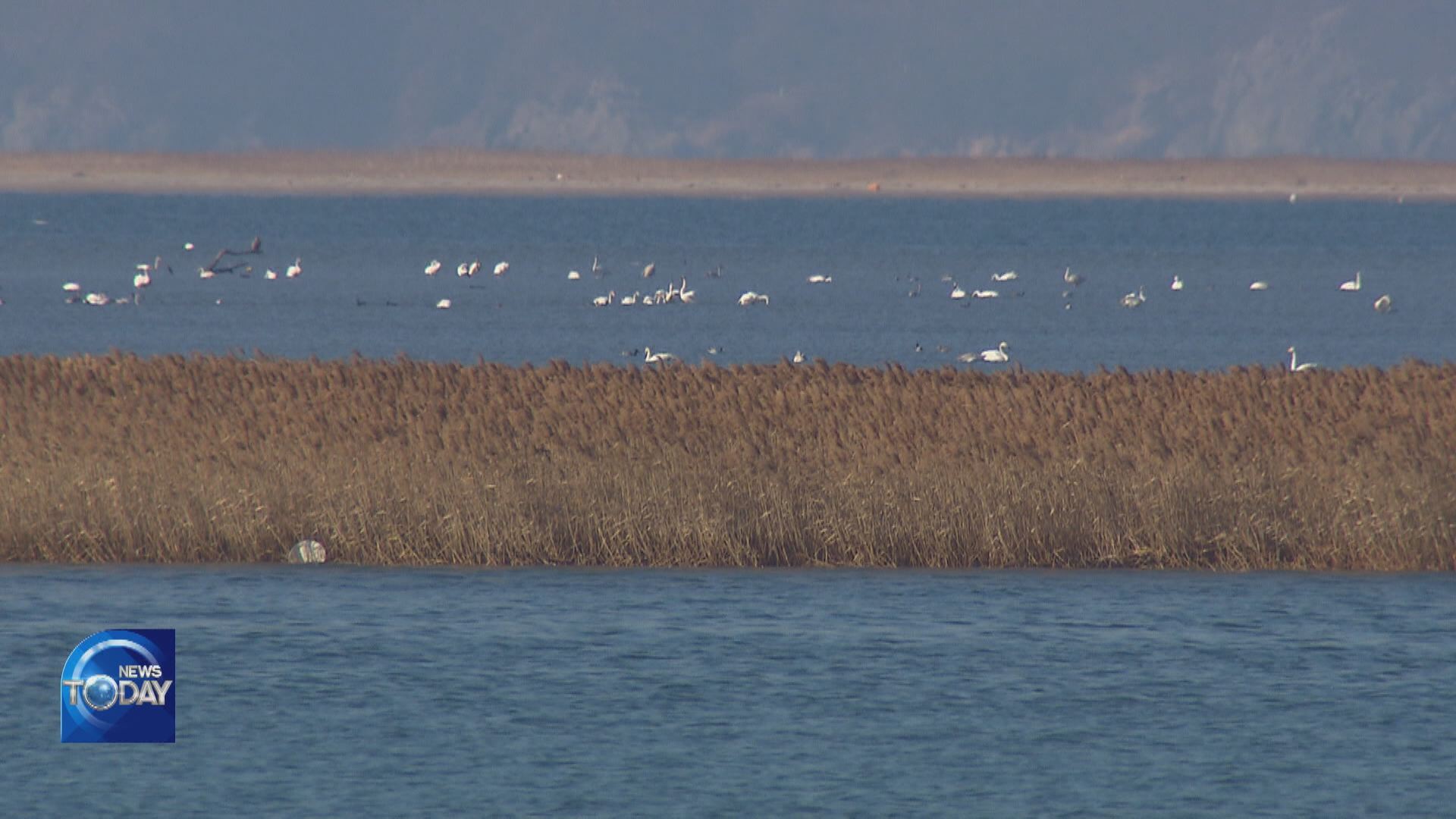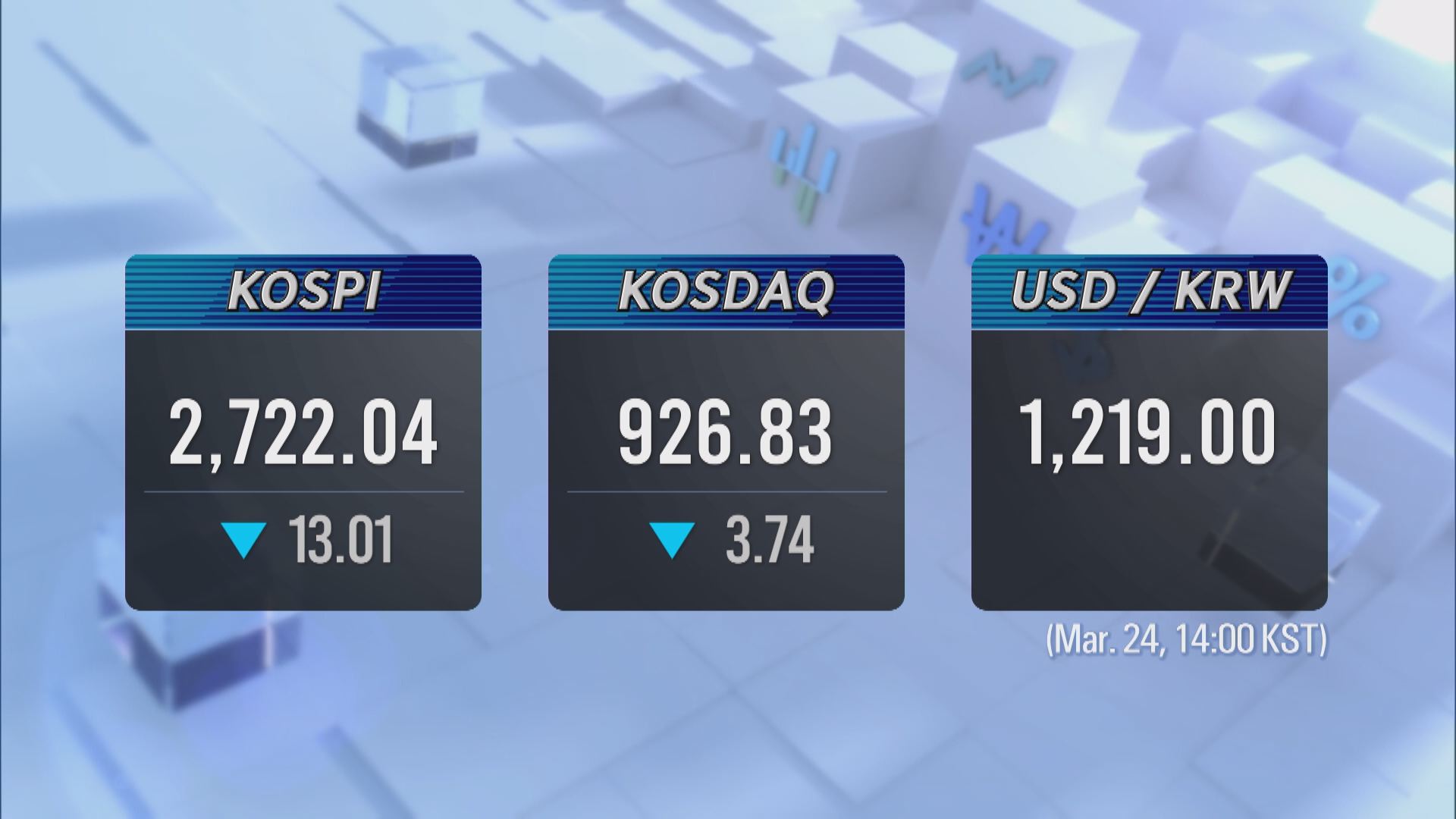WHOOPER SWANS DECREASE IN ESTUARY
입력 2022.03.24 (15:06)
수정 2022.03.24 (16:46)
읽어주기 기능은 크롬기반의
브라우저에서만 사용하실 수 있습니다.
[Anchor Lead]
The Nakdonggang River estuary is the largest stopover for whooper swans. But fewer swans are visiting this area recently because their habitat is becoming increasingly destroyed. Authorities are considering expanding the forestland where the birds can find food.
[Pkg]
Whooper swans, Korea's natural asset and an endangered species, visit the Nakdonggang River area every winter in search of a warmer climate. Every year they fly some two thousand kilometers from Mongolia. The sight of birds flying in stunningly beautiful processions is mesmerizing. But, recently, fewer and fewer whooper swans are spotted in the region. The Nakdong Estuary Eco Center has found the number of swans visiting the area has plunged from more than a thousand to 600 over the past five years. The number of swans visiting the river's downstream areas has also dropped from two-thousand to 1,200. Last year it temporarily surpassed 3,000. The birds mostly appear in areas where people bring food, such as Eulsukdo Island and the Daejeo floodgate.
[Soundbite] Kwon Dong-un(Hanul Natural Ecological Research Center) : "It was obvious that some of the birds flocked to Eulsukdo because food was provided there at 1 p.m."
Expanding the area of woods where swans can find food is urgent in order to preserve their habitat.
[Soundbite] Prof. Lee Jong-nam(Kyungsung Univ.) : "More birds will visit this area if there is more sea club rush, reeds or lotuses for them to eat."
As part of such efforts, the cultivation of sea club rush, a kind of grass that whooper swans mostly eat, began last year. In addition to preserving the birds' habitat, experts are also calling for raising public awareness about them by building bird-watching facilities.
The Nakdonggang River estuary is the largest stopover for whooper swans. But fewer swans are visiting this area recently because their habitat is becoming increasingly destroyed. Authorities are considering expanding the forestland where the birds can find food.
[Pkg]
Whooper swans, Korea's natural asset and an endangered species, visit the Nakdonggang River area every winter in search of a warmer climate. Every year they fly some two thousand kilometers from Mongolia. The sight of birds flying in stunningly beautiful processions is mesmerizing. But, recently, fewer and fewer whooper swans are spotted in the region. The Nakdong Estuary Eco Center has found the number of swans visiting the area has plunged from more than a thousand to 600 over the past five years. The number of swans visiting the river's downstream areas has also dropped from two-thousand to 1,200. Last year it temporarily surpassed 3,000. The birds mostly appear in areas where people bring food, such as Eulsukdo Island and the Daejeo floodgate.
[Soundbite] Kwon Dong-un(Hanul Natural Ecological Research Center) : "It was obvious that some of the birds flocked to Eulsukdo because food was provided there at 1 p.m."
Expanding the area of woods where swans can find food is urgent in order to preserve their habitat.
[Soundbite] Prof. Lee Jong-nam(Kyungsung Univ.) : "More birds will visit this area if there is more sea club rush, reeds or lotuses for them to eat."
As part of such efforts, the cultivation of sea club rush, a kind of grass that whooper swans mostly eat, began last year. In addition to preserving the birds' habitat, experts are also calling for raising public awareness about them by building bird-watching facilities.
■ 제보하기
▷ 카카오톡 : 'KBS제보' 검색, 채널 추가
▷ 전화 : 02-781-1234, 4444
▷ 이메일 : kbs1234@kbs.co.kr
▷ 유튜브, 네이버, 카카오에서도 KBS뉴스를 구독해주세요!
- WHOOPER SWANS DECREASE IN ESTUARY
-
- 입력 2022-03-24 15:06:31
- 수정2022-03-24 16:46:15

[Anchor Lead]
The Nakdonggang River estuary is the largest stopover for whooper swans. But fewer swans are visiting this area recently because their habitat is becoming increasingly destroyed. Authorities are considering expanding the forestland where the birds can find food.
[Pkg]
Whooper swans, Korea's natural asset and an endangered species, visit the Nakdonggang River area every winter in search of a warmer climate. Every year they fly some two thousand kilometers from Mongolia. The sight of birds flying in stunningly beautiful processions is mesmerizing. But, recently, fewer and fewer whooper swans are spotted in the region. The Nakdong Estuary Eco Center has found the number of swans visiting the area has plunged from more than a thousand to 600 over the past five years. The number of swans visiting the river's downstream areas has also dropped from two-thousand to 1,200. Last year it temporarily surpassed 3,000. The birds mostly appear in areas where people bring food, such as Eulsukdo Island and the Daejeo floodgate.
[Soundbite] Kwon Dong-un(Hanul Natural Ecological Research Center) : "It was obvious that some of the birds flocked to Eulsukdo because food was provided there at 1 p.m."
Expanding the area of woods where swans can find food is urgent in order to preserve their habitat.
[Soundbite] Prof. Lee Jong-nam(Kyungsung Univ.) : "More birds will visit this area if there is more sea club rush, reeds or lotuses for them to eat."
As part of such efforts, the cultivation of sea club rush, a kind of grass that whooper swans mostly eat, began last year. In addition to preserving the birds' habitat, experts are also calling for raising public awareness about them by building bird-watching facilities.
The Nakdonggang River estuary is the largest stopover for whooper swans. But fewer swans are visiting this area recently because their habitat is becoming increasingly destroyed. Authorities are considering expanding the forestland where the birds can find food.
[Pkg]
Whooper swans, Korea's natural asset and an endangered species, visit the Nakdonggang River area every winter in search of a warmer climate. Every year they fly some two thousand kilometers from Mongolia. The sight of birds flying in stunningly beautiful processions is mesmerizing. But, recently, fewer and fewer whooper swans are spotted in the region. The Nakdong Estuary Eco Center has found the number of swans visiting the area has plunged from more than a thousand to 600 over the past five years. The number of swans visiting the river's downstream areas has also dropped from two-thousand to 1,200. Last year it temporarily surpassed 3,000. The birds mostly appear in areas where people bring food, such as Eulsukdo Island and the Daejeo floodgate.
[Soundbite] Kwon Dong-un(Hanul Natural Ecological Research Center) : "It was obvious that some of the birds flocked to Eulsukdo because food was provided there at 1 p.m."
Expanding the area of woods where swans can find food is urgent in order to preserve their habitat.
[Soundbite] Prof. Lee Jong-nam(Kyungsung Univ.) : "More birds will visit this area if there is more sea club rush, reeds or lotuses for them to eat."
As part of such efforts, the cultivation of sea club rush, a kind of grass that whooper swans mostly eat, began last year. In addition to preserving the birds' habitat, experts are also calling for raising public awareness about them by building bird-watching facilities.
이 기사가 좋으셨다면
-
좋아요
0
-
응원해요
0
-
후속 원해요
0

















이 기사에 대한 의견을 남겨주세요.